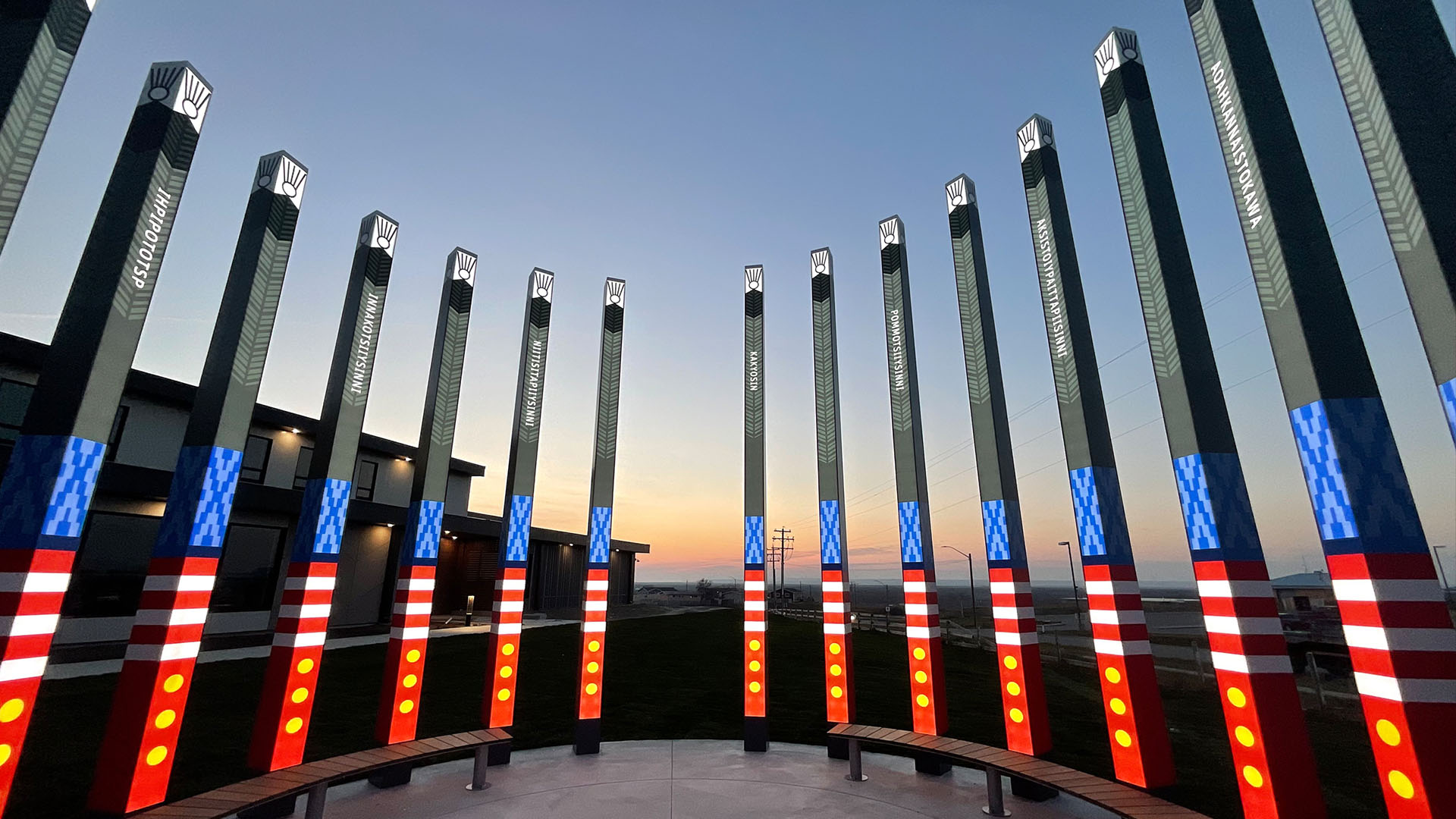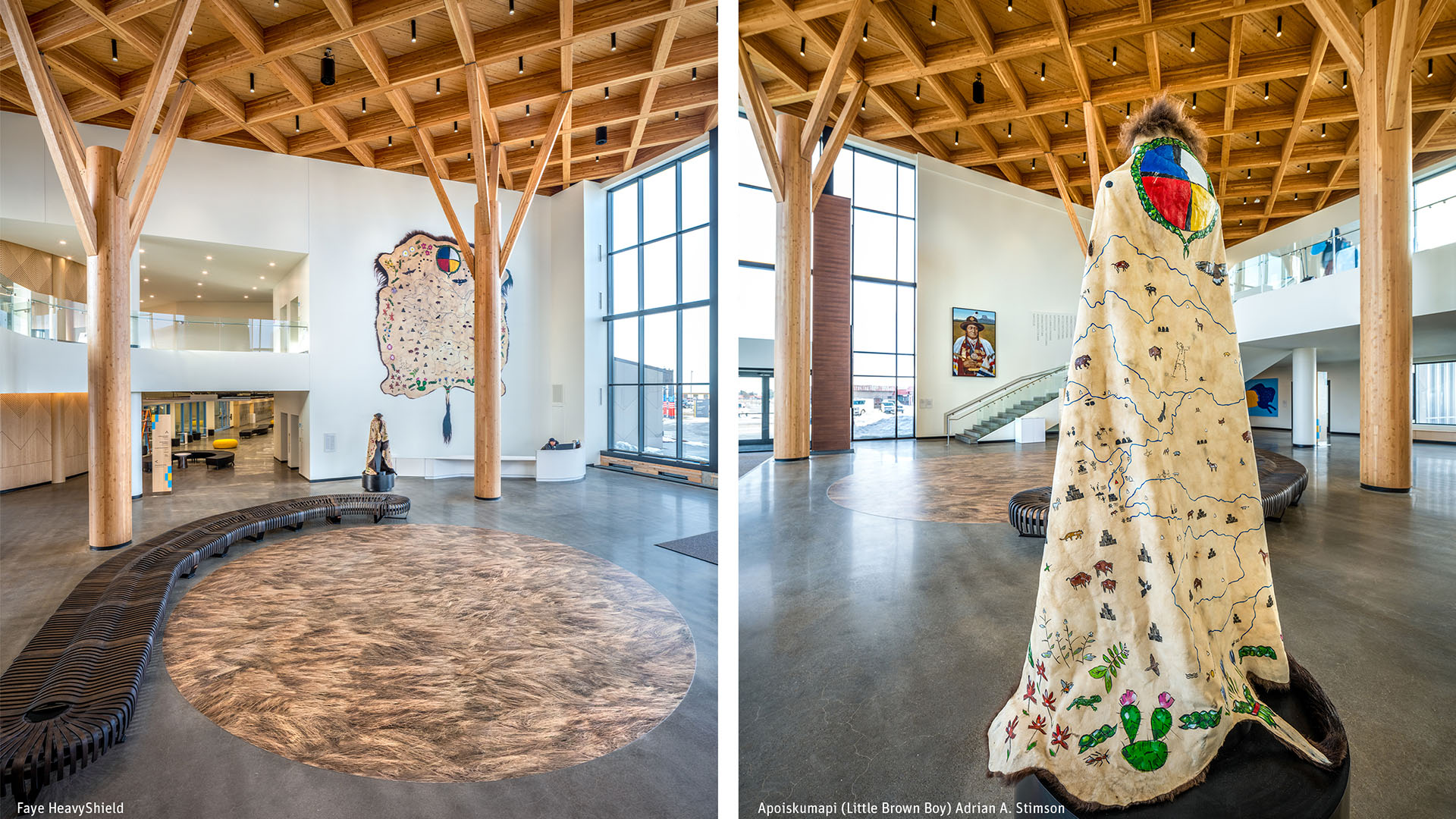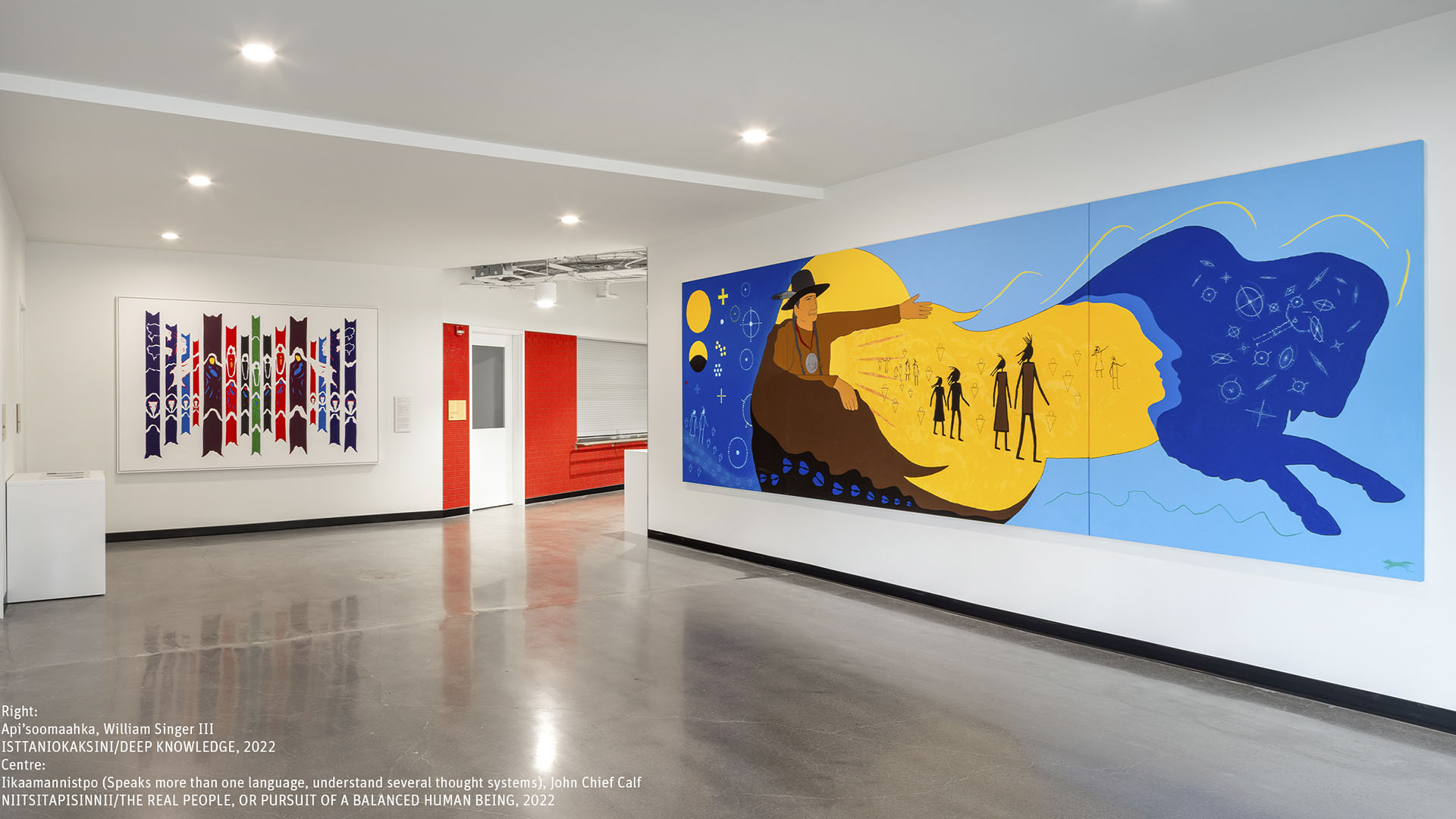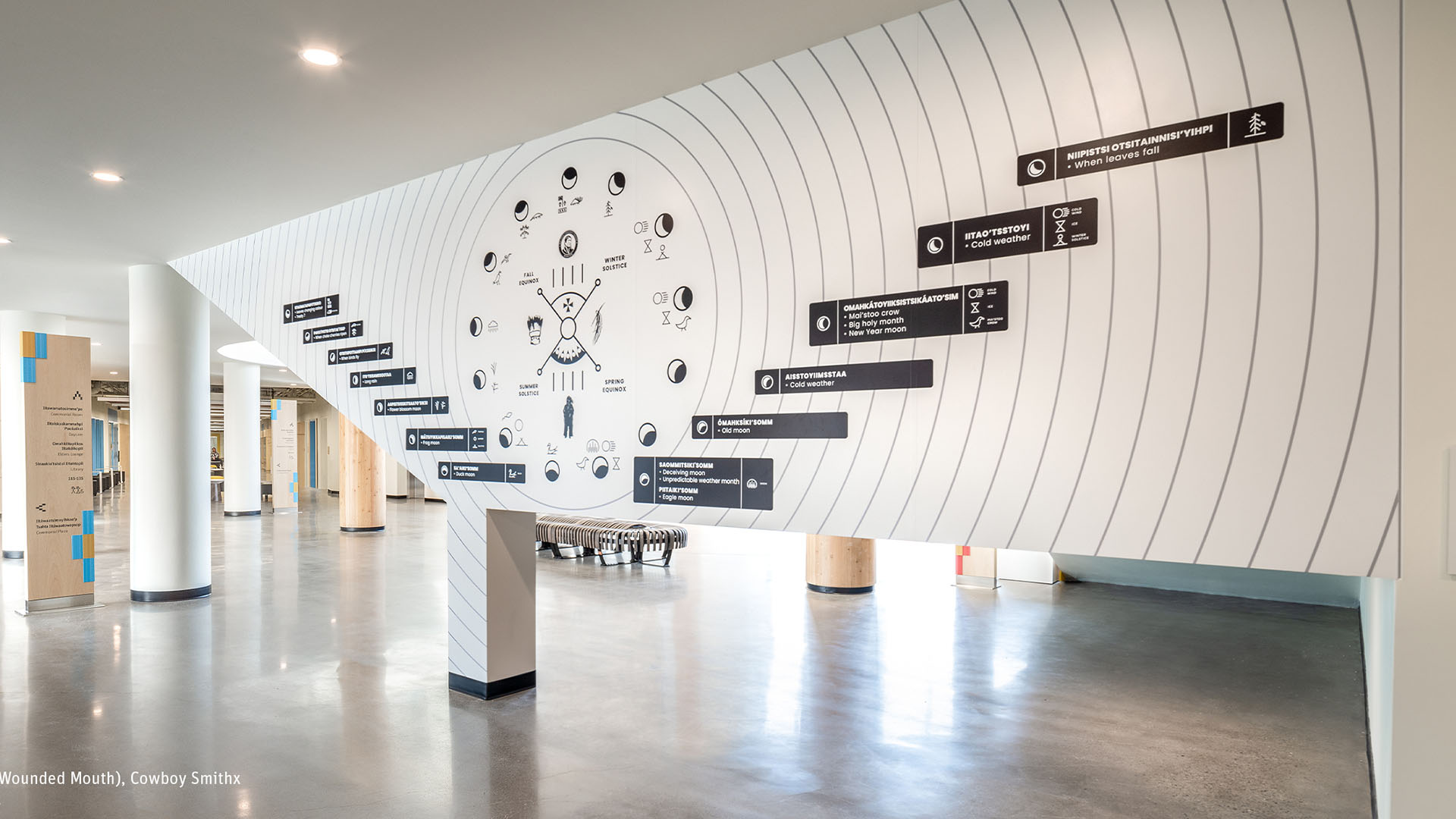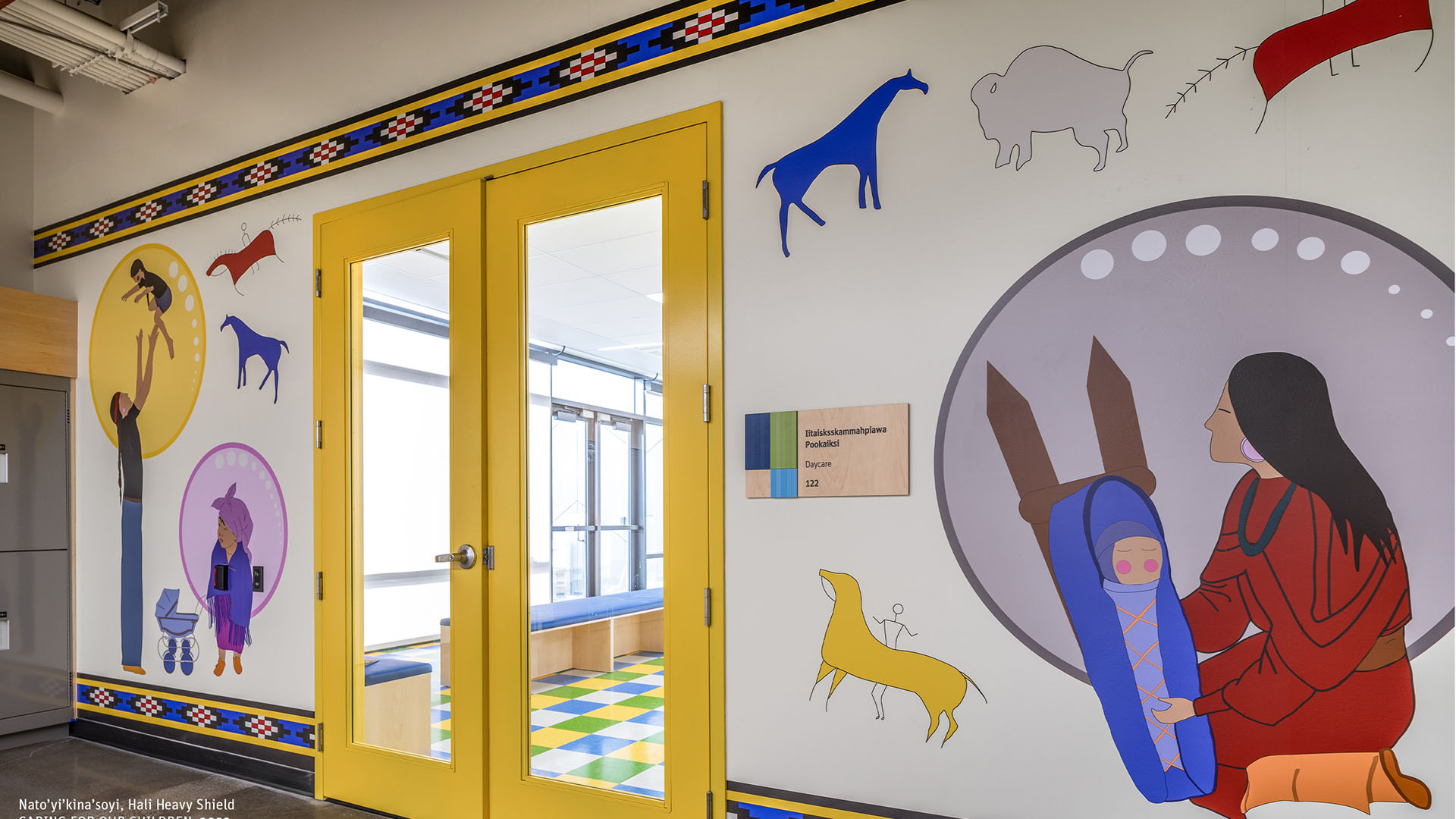Mi’kai’sto Red Crow Community College
Entro recently completed the planning, management and curation of an ambitious two-year art program for Mi’kai’sto (Red Crow Community College) in Standoff, Alberta, a Kainai Blackfoot community located on the Blood Reserve. For over 30 years, Red Crow Community College has served both Indigenous and non-Indigenous students across southern Alberta. As the first Tribal College in Canada, Red Crow is a leader in delivering education rooted in Blackfoot culture to meet the needs of the students, Elders, and the broader community. The new campus includes a central gathering atrium, kitchen, childcare centre, a round room, and a gymnasium that can be used for cultural celebrations and other events.
Agency
Practice Area
Client
Mi’kai’sto Red Crow Community College
Industry
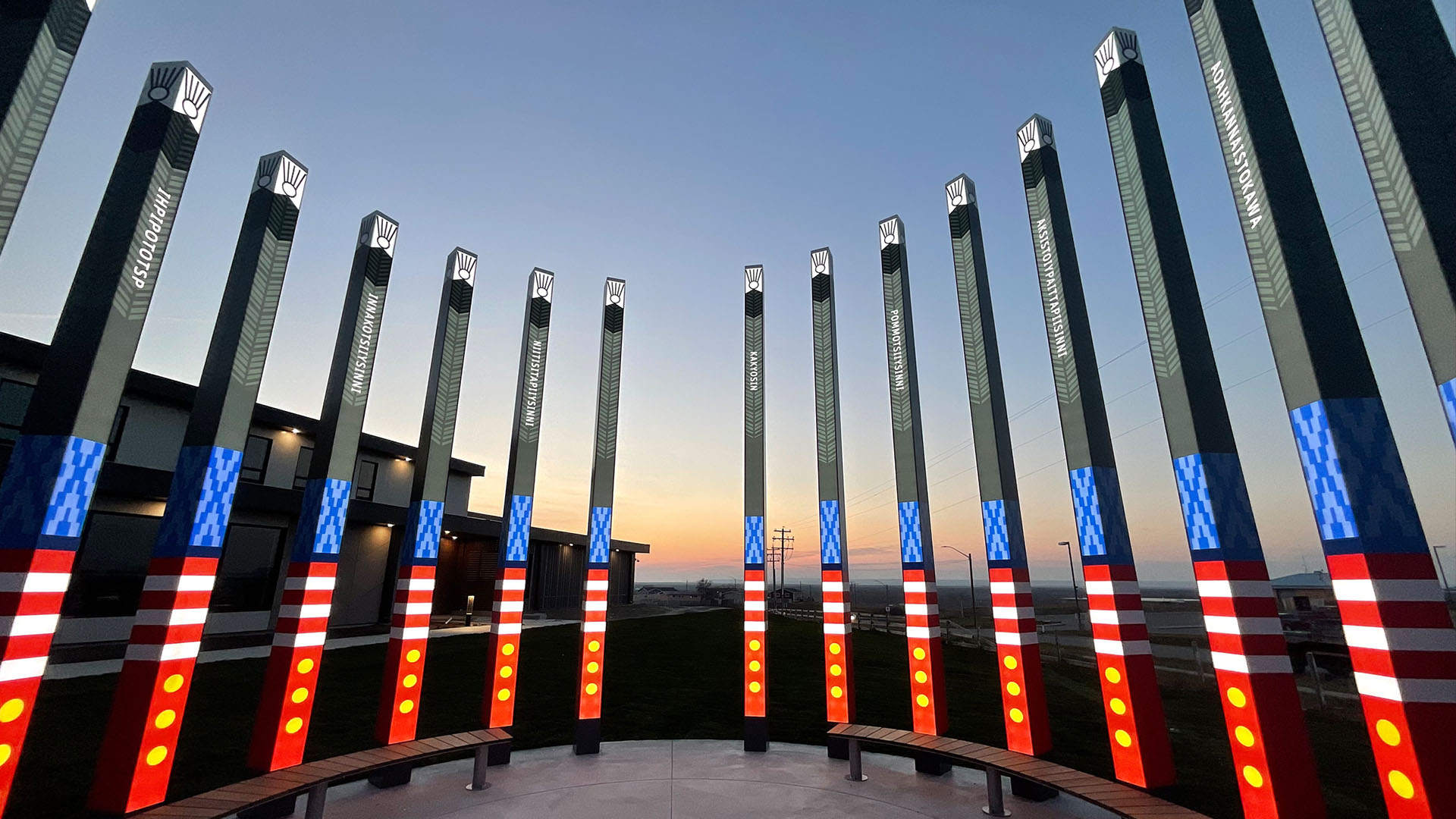
The Challenge
The new space needed to be meaningful to students and visitors, to encompass the college’s values and Blackfoot culture through art and language. The resulting collection features material, cultural symbols, and contextual elements that are essential to the Blackfoot identity and to the Mi’kai’sto message.
Project Vision
Artists responded to the program art committee and Elders’ briefing, which conveyed the aspirations for Mi’kai’sto, for the young people and the community, and the importance of the Blackfoot worldview, storytelling, and knowledge transfer, that through each work, welcome people into a Blackfoot space.
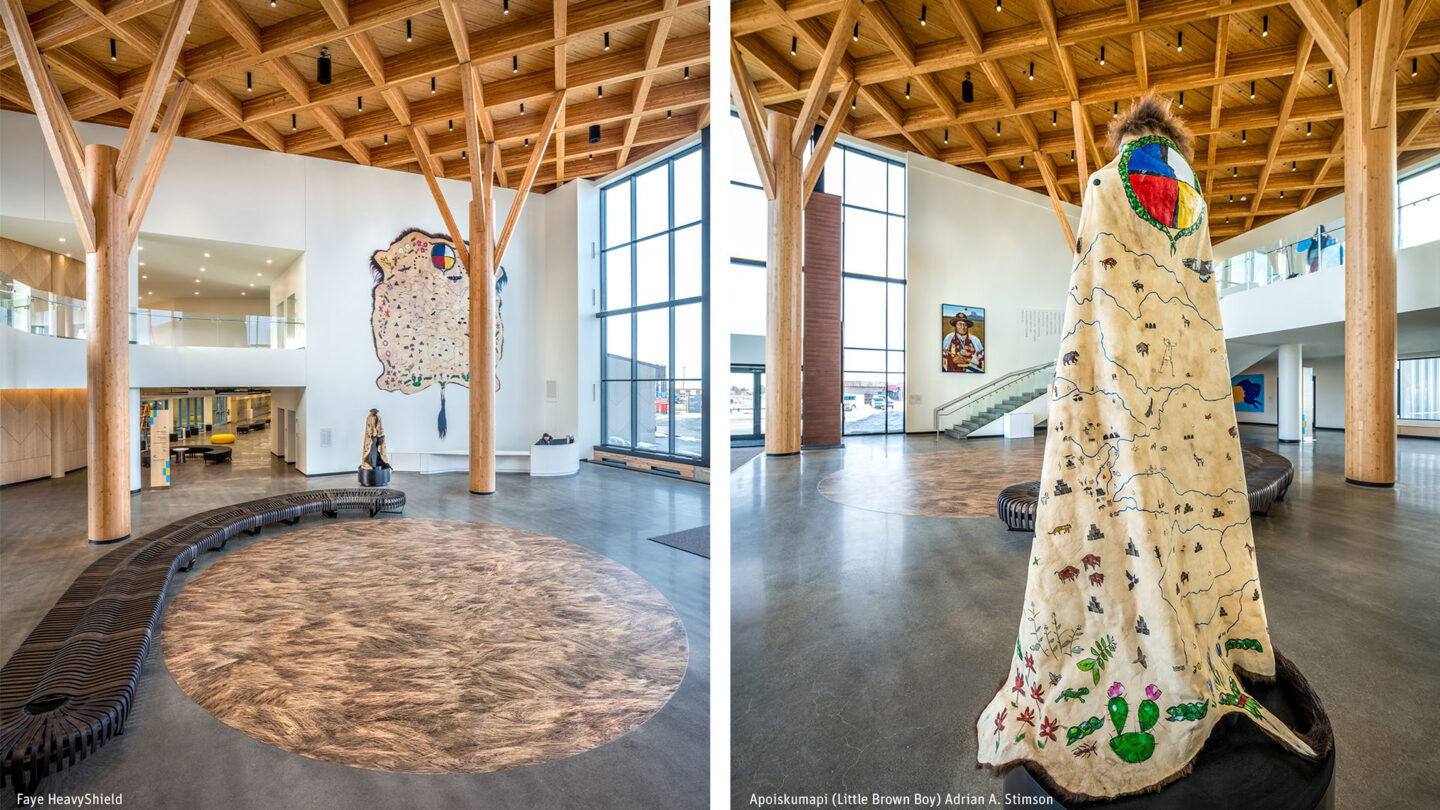
Left: Faye HeavyShield KIIKSISTSINOONA/OUR MOTHER, 2022 Right: Apoiskumapi (Little BrownBoy) Adrian A. Stimson BLACKFOOT TERRITORIAL ROBE, 2022
Jason Dziver

Iniskim Aki, Janice Elizabeth Tanton MI’KAI’STO, 2022
Jason Dziver
Design + Execution
Fifteen Blackfoot and other invited artists have created original commissioned works of art for this new college facility, each responding to the program art committee and Elders’ briefing. The art program not only celebrates the community but supports it. By developing a system of paid commissions, established and emerging Blackfoot artists were able to gain experience and showcase their work to a wider audience.
“We wanted people to feel that they were in a Blackfoot space when they entered the building. We thought the very best way to do that was through art. Each individual piece throughout the building conveys our Blackfoot culture, history, and ways of knowing. Collectively, the art tells the story of who we are, where we have been, and what our future holds. It is a very special place.” Lionel Weasel Head (Aapoomiita), Chair of the Board of Governors, Mi’kai’sto
The exterior monument complements the art program’s celebration of Blackfoot culture and stands as a landmark beacon in the community. Its design is derived from the form of a traditional Kainai stand-up headdress. The 22 colorfully patterned and illuminated poles stand in a circle with openings facing East and West, defining an accessible and intimate space for gathering, or the contemplation of the Blackfoot values printed on several of the poles.
The Mi’kai’sto project included the design of a bilingual wayfinding program for the 129,000-square-foot facility. The use of Blackfoot language as the primary voice of communications throughout the school is the most culturally significant element of the program and an essential aspect of the Mi’kai’sto identity. Material selection, typography, cultural symbols and patterns combine to express a program that is clear, contextually relevant and integrated with the architecture.
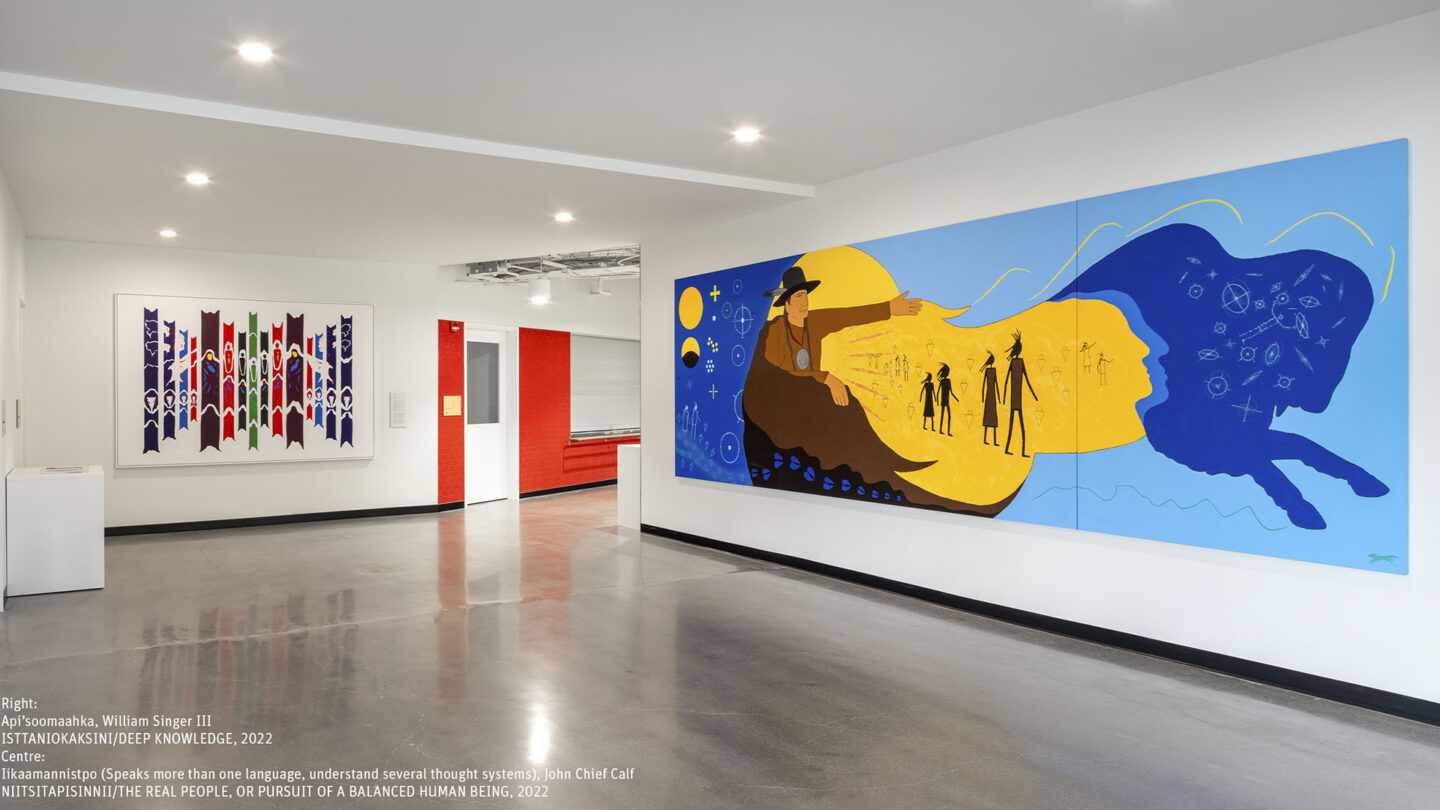
Jason Dziver
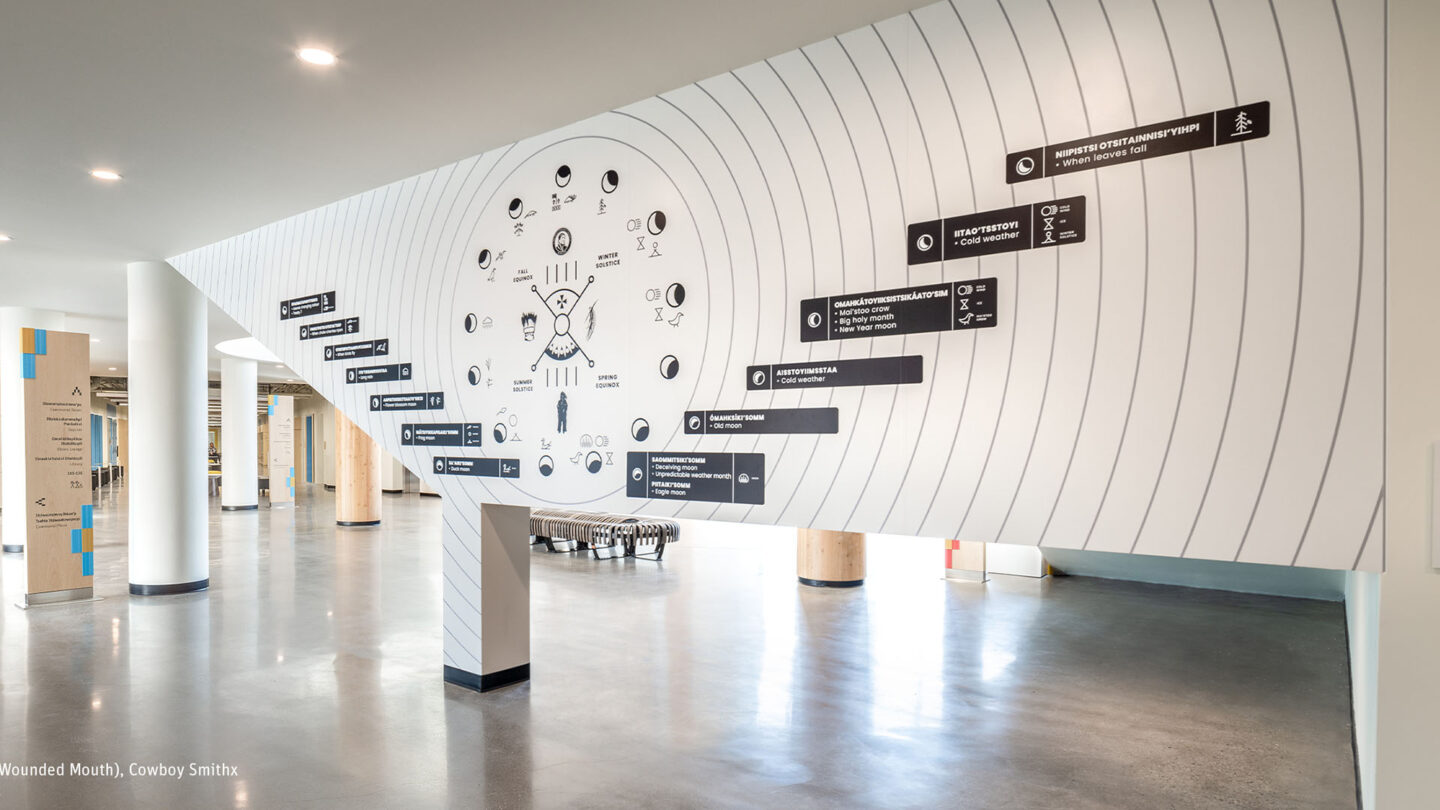
Iikaakskitowa (Wounded Mouth), Cowboy Smithx AVATRIIX, 2022
Jason Dziver
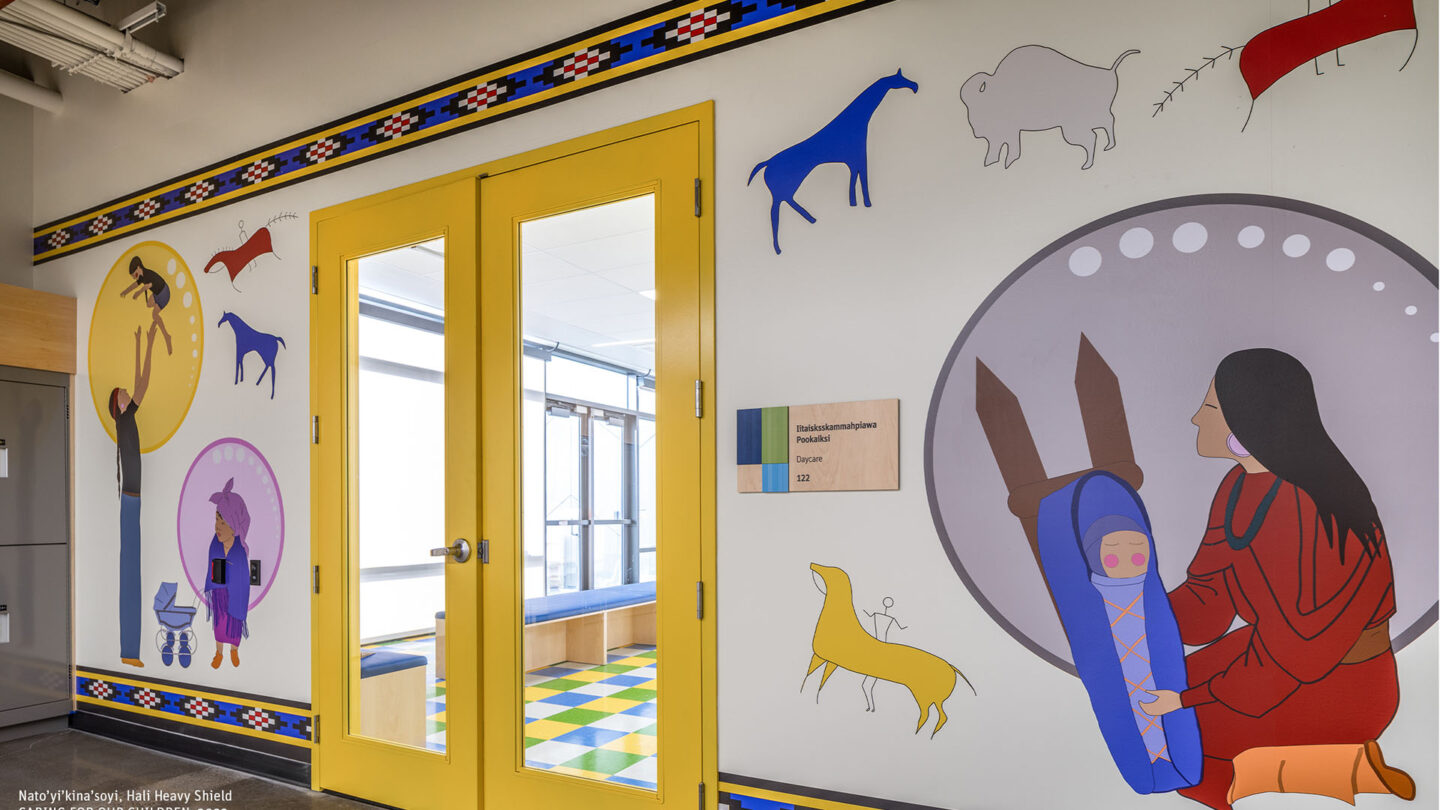
Nato’yi’kina’soyi Hali Heavy Shield, CARING FOR OUR CHILDREN, 2022
Jason Dziver
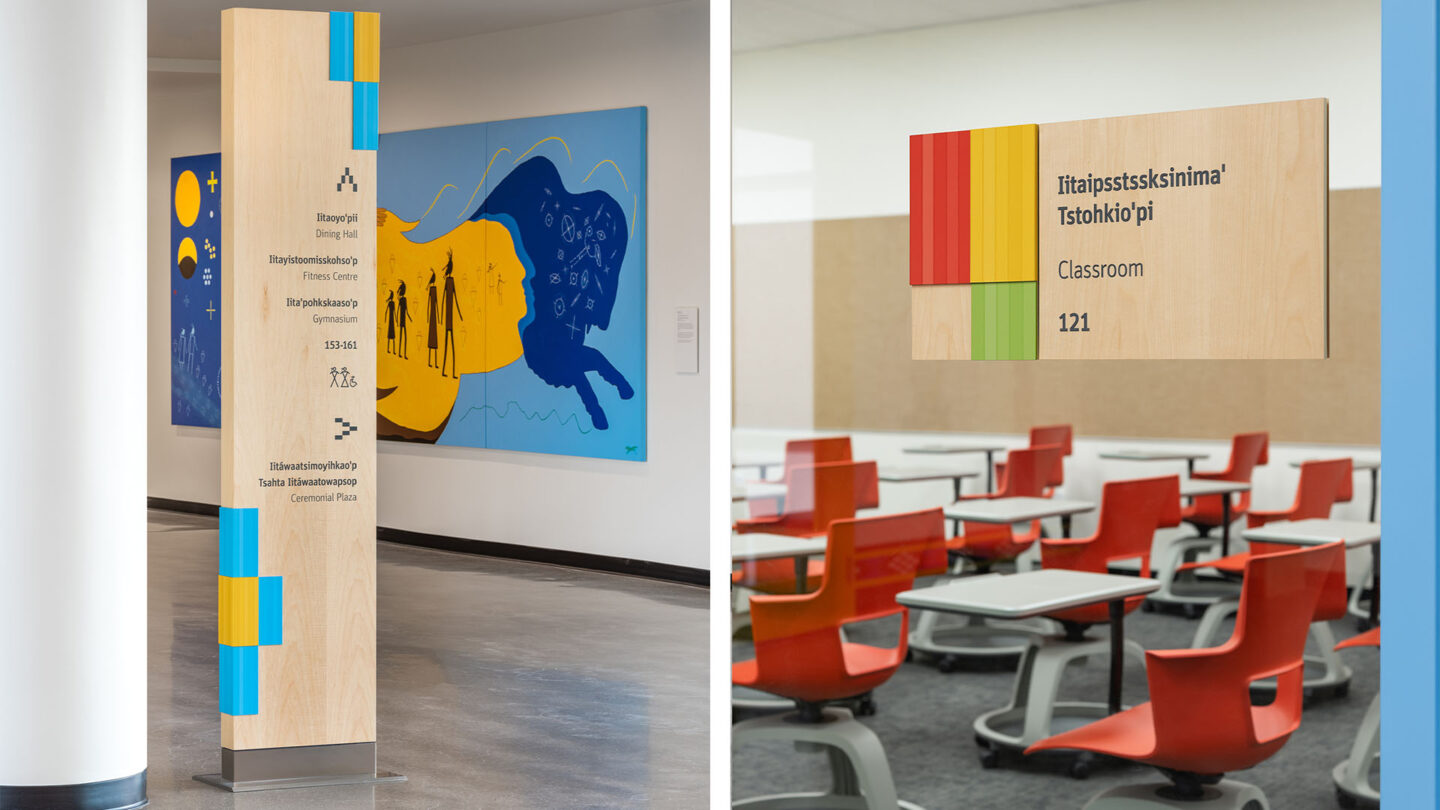
A bilingual wayfinding program uses the Blackfoot language as the primary voice of communicationsthroughout the school.
Jason Dziver
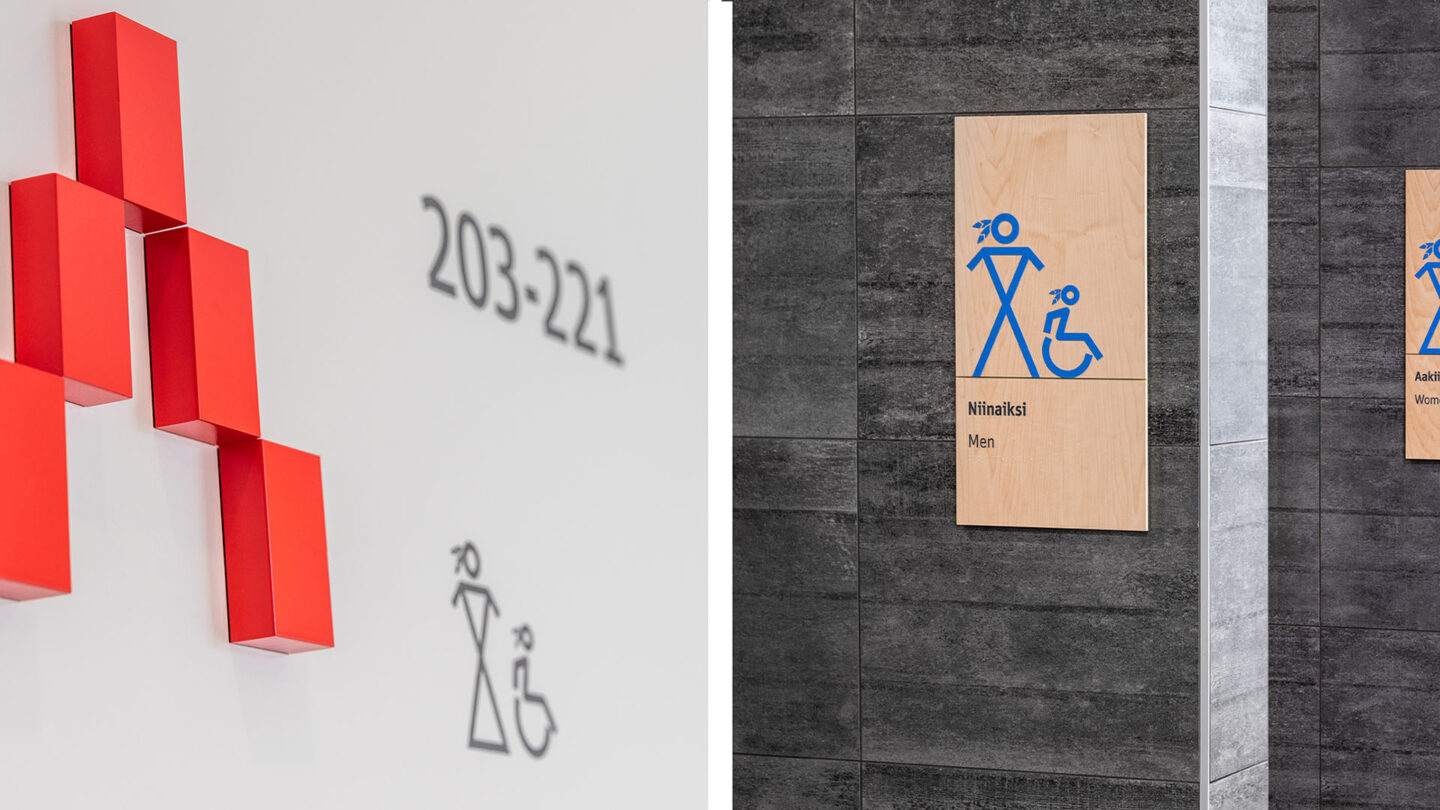
Detail showing dimensional directional signage. Custom pictos were designed in collaboration with theclient.
Jason Dziver
Project Details
Diverse use of signage and design elements brought together to connect visitors to the campus in an engaging and authentic way. From the bilingual signage and custom pictos, it all felt intentional and well researched.
The seamless and effective integration of architecture, art, and bi-lingual wayfinding sets this project apart. All of the components in color, materiality and composition work together to create a space that, on a superficial level is welcoming, while on a deeper level promotes “Blackfoot culture, history, and ways of knowing.”
Design Team
Chris Herringer (design director)
Monika Meyer (designer)
Shehrbano Aktar (designer)
Kevin Cortez (designer)
Sabrina Diehl (designer)
Aleks Bozovic (designer)
Colin Burrows (technical designer)
Collaborators
Kasian (architecture)
WSI Sign Systems (physical fabrication)
Lori Van Rooijen (project director and owner’s representative)
Larkspur Group
Mary Beth Laviolette
Independent Curator
Alberta Foundation for the Arts (afa)
Art Loans
Mano’taanikaapi (artist)
Bryce Many Fingers/Singer (artist)
Naatoiyiki (Holy Whistle) (artist)
Cheyenne McGinnis (artist)
Nato’yi’kina’soyi (artist)
Hali Heavy Shield Ponokaki (artist)
Marjie Crop Eared Wolf Koo Kii (Corner) (artist)
Ryan Jason Allen Willert (artist)
Iniskim Aki (artist)
Janice Elizabeth Tanton (artist deeply connected to the siksika nation)
Iinniiwahkiimah (buffalo herder) (artist)
Terrance Houle (artist)
Iikaakskitowa (wounded mouth) (artist)
Cowboy SmithxIikaamannistpo (speaks more than one language, understand several thought systems) (artist)
John Chief Calf Faye HeavyShield (artist)
Apoiskumapi (little brown boy) (artist)
Adrian A. Stimson Api’soomaahka (artist)
William Singer III Ahkoiinnimaki (pipe woman) (artist)
Star Crop Eared Wolf Aa Pa Man Ski (across singing) (artist)
Delia Cross Child (artist)
Photo Credits
Jason Dziver
Open Date
October 2022
